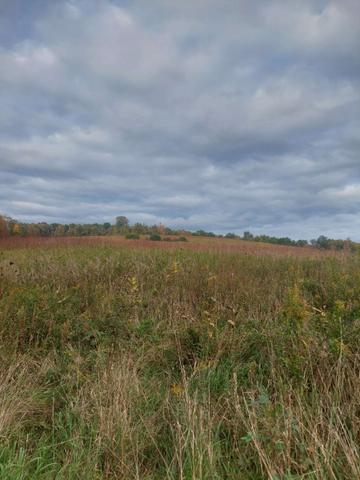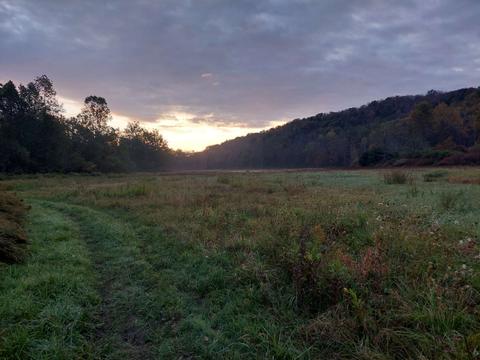
Lackawanna State Park
Lackawanna State Park
1839 N Abington Rd, North Abington Township, PA 18414
Official WebsiteLackawanna State Park Trail Map
Tips for Birding
Use of a spotting scope will enhance birding efforts conducted during the migration seasons when birders are scanning Lackawanna Lake for waterfowl & other water dependent species.
Trails can become poorly marked at sections & thus become difficult to navigate; obtaining a hard copy of the Lackawanna State Park Map is strongly recommended.
Use of waterproof footwear is also encouraged as many trails are muddy & may hold standing water, especially after rain events & spring snow melt.
Having a day-pack with plenty of drinking water, trail food (if necessary), & insect repellent is likely to enhance hiking experiences made within the park.
Sections of the park become available to hunters from October through December; trail users at this time are reminded to use caution & to wear brightly colored clothing.
Pennsylvania state rules & regulations apply to all visitors using this park; proper licenses/permits are required for those hunting, camping, fishing, & boating within the boundaries of the park. For additional information on licensing, visit the websites for the Pennsylvania Game Commission, Pennsylvania Fish & Boat Commission, and/or the Department of Conservation & Natural Resources.
**Lackawanna State Park is open daily from sunrise to sunset. Hours of operation for the Park Office can be found online or via calling the Park Office directly. Restroom facilities are available at the Park Office & near the campgrounds & picnicking area, but may become closed during the winter months. Additional park information can be located on the park's DCNR webpage**
Birds of Interest
Lackawanna State Park is an excellent destination to spend several hours pursuing songbirds! It is most enjoyed during the spring & fall migration seasons when abundances of wood-warblers, vireos, & thrushes can be encountered near groupings of other more expected passerines. The park is currenting lacking in many of the boreal type ecosystems & coniferous forests found at other parks within the region but responds to such factors by showcasing dense forest thickets & vegetative cover perfect for concealing migrants & ground nesters. During the spring through late summer months, birders can be on the lookout for Yellow, Common Yellowthroat, American Redstart, & Chestnut-sided Warblers. Prairie Warblers, which are localized breeders within Lackawanna County, also breed within the park. The park's forests have become the ideal habitats for select species of sparrows, Eastern Towhees breed here, as does another localized region-wide breeder, the Dark-eyed Junco. Trail users may find themselves in the company of Eastern Hemlocks; when becoming the case birders should listen for Brown Creepers, Pileated Woodpeckers, & Golden-crowned Kinglets (during migration). In the spring and late fall, scanning Lackawanna Lake for waterfowl can be rewarding; the Route 407 Bridge is often a great location to start from!
About this Location
**For additional information, safety tips, & details regarding expected species, please click the link above to view the Lackawanna State Park Hotspots Overview/Group Page**
Park Overview:
Lackawanna State Park is a 1,411-acre state park located in North Abington & Benton Townships, Pennsylvania. The park is named after Lackawanna County through which the Lackawanna River flows. The term Lackawanna is a Native American word meaning "the meeting of two streams." Contained within the park is 44.9 square miles of the Lackawanna River Watershed with several streams feeding the 4 tributaries that empty into the Lackawanna Lake. This 198-acre water body is a focal point of the park presenting visitors with many fishing & boating opportunities. Beside the lake sits a swimming pool, picnicking areas, & campgrounds with sites available for tents, camping trailers, & RV's; camping yurts and cottages are also available. Additional forms of recreation currently include cross country skiing, mountain biking, horseback riding, & hiking on roughly 20 miles of trails. Environmental education programs are also offered to park visitors throughout the year.
Early Park History:
The existence of Rt. 407 made settlement of this area possible & ultimately lead to the creation of the park visitors will experience today. The route played a significant role as a major transportation corridor used by both Native Americans & early settlers & ultimately connected them to New York State.
Early colonial settlement of the park began with the arrival of Ezra Bassett of Plainfield, CT in 1805 whom settled in Benton Twp. & Asa Knight in 1812 whom settled in N. Abington Twp. As more families established homesteads within the area it was able to receive the name of Carpentertown (named after the Carpenter Family). Improvements to Route 407 from 1821-1826 lead to the route's renaming as the Philadelphia & Great Bend Turnpike & encouraged additional development to the area. Several buildings began forming around where the road to the boat mooring area exists today & collectively became known as Wallsville. Wallsville continued to grow from 1825-1860 and came to include a gristmill (near present day dam), wheelwright shop, 2 one room schoolhouses, 2 sawmills, a Methodist Episcopal Church, a stagecoach tavern, & a post office.
The Methodist Episcopal Church originally operated in one of the schoolhouses but was later torn down before it's rebuild in 1860. The church sat on the site of where the Park Office sits today; it closed its doors in 1928. It's Reverend, Jacob M. Koehler, became famous for his efforts in establishing education for deaf children in Northeastern Pennsylvania. In 1884, Reverend Koehler approached the PA Society for the Advancement of the Deaf (PSAD) at a convention asking for mandatory statewide education for deaf children. PSAD met his requests & thus formed the Koehler Resolution which ultimately became a bill that was passed in Pennsylvania Congress.
In 1898, The Maitland Fair & Driving Park Association began hosting annual fairs & horse races within the park for 12 years; races occurred near the park's campground along the Woodlands Pond Trail.
Formation of the Park:
In the early 1900s, water was an essential component in the operation of steam locomotives transporting goods & people across the nation. The Delaware, Lackawanna, & Western (DL&W) Railroad acquired its water supply from the Scranton Gas & Water Company. When water prices were deemed too expensive by the railroad co., DL&W began purchasing farmland beside States Creek (within present day Lackawanna SP) with plans of one day constructing a reservoir that would supply DL&W locomotives with the water they needed. In total, thirteen family farms were purchased beginning in 1913. Surprisingly, the water company then decided to lower their rates & thus DL&W abandoned its plans to construct a reservoir; the railroad co. maintained ownership of the land renting it out to tenant farmers.
In 1946, Scranton Coal Operator Robert Moffat purchased the land from DL&W & began renting it out to workers of his coal company. In 1968, the Dept. of Forest & Waters (now DCNR) purchased the property in response to Dr. Maurice Goddard's initiative to have a state park located within 25 miles of every Pennsylvania resident.
After construction of the dam & lake, the park officially opened June 10th, 1972; the campground opened in 1975.
Features
Restrooms on site
Content from Official Website
Last updated December 30, 2023
